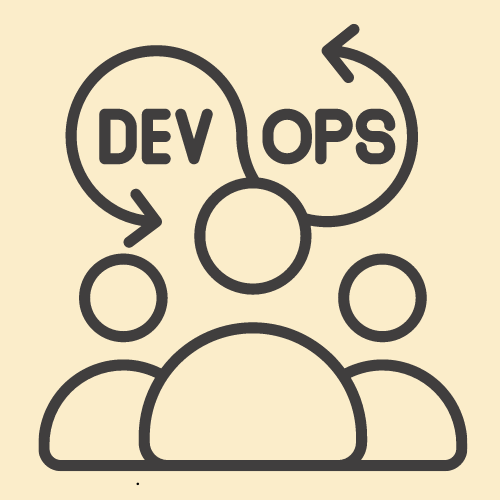5 Best Practices for Managing a Remote Dev Team

The world of work has undergone a significant transformation in the last 5 years. We were already slowly transitioning to the idea of remote work. Then, the pandemic accelerated it. Now, remote work is the norm for a huge number of people. The tech industry is one of the leading remote sectors, and it’s possible to have an entirely remote dev team.
Remote work brings a great number of benefits but also poses some challenges when it comes to management. In this article, we share some best practices that will help you get the best from your remote dev team and help you provide the best environment for them.
Chapters
Clear Communication Channels

Communication is key for any team. It’s even more important for a remote team. Your team might be in different towns, cities, countries, and even time zones. That means you need crystal-clear communication. Set expectations clearly and stick to them. You should create dedicated channels for different types of communication so that important messages aren’t missed.
That means having a dedicated channel for project updates. Another for brainstorming. You should even have one for informal chats. If you’re using a platform like Slack or Teams, you could create actual channels with each purpose in mind.
This type of communication is great for teams that aren’t always working at the same time. It makes catching up as simple as scrolling back.
Create a Robust Onboarding Process
New team members can be forgiven for feeling a bit lost when they first join a remote team. Unlike in a physical office, they can’t just drop by someone’s desk and ask a question. A robust onboarding process provides them with everything they need to know. Using a step-by-step guide creator can make this process seamless, allowing teams to design clear, interactive onboarding guides that help new hires get up to speed quickly and independently. This will help them to become a productive team member as quickly as possible.
Let’s say you’re expanding your team and want to hire PHP developers. A great onboarding process would include:
- A comprehensive welcome package that includes essential documentation, company structure, guidelines, policies, and resources.
- Technical set-up for any new software and kit that they are required to work with, plus training on it if required.
- A mentorship or buddy program that either guides them through their role or connects them with a peer.
- Clearly set goals and expectations that define what success in the role looks like.
- A method for open feedback and dialogue with management.
Set Realistic Goals and Expectations

We touched on this during the onboarding process. Goals and expectations are a necessary part of running a remote team. They help managers understand progress toward a completed goal. Plus, they help employees understand where they are in the project process. Many remote teams use tools such as Monday or Asana to track tasks and create timelines or expectations.
Regular Check-Ins
It’s tempting to let your team just get on with their work and judge their performance by the outcomes. The issue with this is that you lose connection to the human on the other side of the screen. Remember that these are real people who deserve some of your time, even if just for a chat. Consider organizing an All-Inclusive Corporate Retreat to bring remote team members together for immersive collaboration and relationship-building—perfect for kickstarting trust and belonging.
Offer Skills Development and Continuous Learning
Creating a learner-friendly environment within your team is a way of ensuring your team is always developing their skills. Regularly offer training on new technology or software. Encourage peer support and mentorship. Essentially, look to develop your team wherever you can. You’ll reap the benefits of a driven, engaged team. They’ll feel valued and that they are developing their career. In fact, when you hire WeWeb developers with no-code expertise, you empower your team to tackle challenges more efficiently while advancing their skill set.
Benefits of Having a Remote Dev Team

The concept of remote work has gained immense traction, especially in the tech industry. Remote development teams have become a popular option for businesses looking to leverage top-tier talent without geographical constraints. Whether you’re a startup or an established company, having a remote dev team offers a wide range of advantages, from cost savings to increased productivity.
Let’s explore the key benefits of having a remote development team and why more businesses are adopting this model.
1. Access to a Global Talent Pool
One of the biggest advantages of hiring a remote development team is access to a global talent pool. You are no longer limited by your location and can hire developers from anywhere in the world. This opens the door to finding specialized talent that might be scarce or expensive in your region. For example, if your project requires niche skills like machine learning or blockchain development, you can source experts globally rather than being confined to your local area.
Hiring remotely also means you can work with developers who are experienced in different industries and bring diverse perspectives to your projects. This diversity in talent can lead to more creative solutions and innovations.
2. Cost Savings
A significant benefit of having a remote development team is cost savings. Companies can save on:
- Office space: Without the need for a physical office, businesses can cut costs on rent, utilities, and other overhead expenses.
- Salaries: Hiring remote developers from regions with lower costs of living often means you can offer competitive salaries that are lower than those in high-cost tech hubs like Silicon Valley or New York.
- Commuting and infrastructure costs: Remote teams do not require commuting benefits or office equipment, as they typically work from home with their own setups.
These cost savings can be reinvested in other areas of your business, such as marketing, product development, or customer acquisition, enabling your company to grow more efficiently.
3. Increased Productivity
Many studies have shown that remote workers tend to be more productive than their in-office counterparts. Without the distractions of a traditional office environment—such as unnecessary meetings, office politics, or casual interruptions—remote developers can focus on their work and deliver results more efficiently.
Moreover, remote work allows for a more flexible work schedule. Developers can work during their most productive hours, whether that’s early in the morning or late at night, which often leads to higher quality work. This flexibility also encourages better work-life balance, which in turn can boost overall productivity and job satisfaction.
4. Scalability
A remote development team makes it easier to scale your operations. You can hire additional developers quickly when the demand for your project increases or bring on short-term contractors for specific tasks without needing to rearrange office space or worry about geographical limitations. This flexibility allows businesses to scale up or down depending on project needs without the overhead costs associated with onboarding in-house employees.
Remote teams also give businesses the flexibility to work on multiple projects simultaneously, as you can assign team members to different projects based on their expertise and availability.
5. 24/7 Development Cycle
By having a distributed remote development team across different time zones, you can achieve a 24/7 development cycle. This means that while one part of your team is logging off for the day, another is just starting their workday. With proper coordination and collaboration, this continuous work cycle can lead to faster project completion, quicker issue resolution, and around-the-clock support for your systems or clients.
For companies that need to deploy features quickly or troubleshoot critical issues, a remote team spread across various time zones provides a significant advantage.
6. Lower Turnover and Higher Retention
Remote work has been shown to increase employee satisfaction, largely due to the flexibility it offers. Employees who work remotely often have a better work-life balance, less stress from commuting, and the ability to customize their work environments to suit their needs. Happier employees are less likely to leave, resulting in lower turnover rates.
For businesses, this means spending less time and resources on recruiting and training new employees. By offering remote work opportunities, companies can retain top talent for longer periods, improving the stability and expertise of their development teams.
7. Diverse and Inclusive Teams
Remote work allows you to build diverse and inclusive teams more easily. Since location is not a barrier, you can hire people from different countries, cultures, and backgrounds. This diversity brings fresh perspectives and ideas, fostering creativity and innovation within your team.
Moreover, remote work provides opportunities for individuals who may have challenges working in traditional office environments, such as parents, caregivers, or people with disabilities. By offering remote work, companies can tap into a broader talent pool while promoting inclusivity.
8. Environmentally Friendly
Remote teams contribute to a more sustainable and environmentally friendly business model. Without the need for commuting, there is a significant reduction in carbon emissions and traffic congestion. Additionally, companies that operate remotely often have a smaller physical footprint, reducing energy consumption in offices.
This environmentally conscious approach is increasingly important in today’s world, where consumers and stakeholders are becoming more aware of corporate responsibility and sustainability.
9. Better Work-Life Balance
Remote work offers employees the flexibility to create their own schedules and balance personal commitments with work responsibilities. This better work-life balance reduces burnout, increases job satisfaction, and improves mental well-being. Employees with a healthy work-life balance are more motivated, focused, and productive, leading to better project outcomes and overall team performance.
For businesses, promoting work-life balance through remote work opportunities also boosts employee loyalty, as workers feel their needs are valued and respected.
10. Resilience to Disruptions
Having a remote development team makes your business more resilient to disruptions, such as natural disasters, pandemics, or other unforeseen events that may affect a traditional office-based workforce. Remote teams can continue working from anywhere, ensuring that your projects stay on track even when external factors impact your physical office space.
The COVID-19 pandemic, for example, showed that businesses with established remote work infrastructures were able to adapt more quickly and continue operations with minimal disruption.
The benefits of having a remote development team are clear: access to a global talent pool, cost savings, increased productivity, scalability, and a more diverse and inclusive workforce. Remote teams offer companies the flexibility to grow and adapt quickly while maintaining high levels of employee satisfaction and retention. In today’s fast-paced, ever-evolving business landscape, adopting a remote development team could be the key to driving innovation, improving operational efficiency, and staying competitive.
Whether you’re a startup looking for flexibility or an established company aiming to reduce costs, a remote development team can offer significant advantages that drive long-term success.
Cons of Having a Remote Dev Team

While remote development teams offer many benefits such as flexibility, cost savings, and access to global talent, there are several challenges that come with managing a distributed workforce. From communication barriers to security concerns, businesses must carefully weigh these potential downsides before fully committing to a remote team model.
Let’s explore the key cons of having a remote development team and how these challenges can impact productivity, collaboration, and overall project success.
1. Communication Challenges
One of the most common drawbacks of a remote development team is communication. Without the ability to communicate face-to-face, team members may experience delays, misunderstandings, or incomplete information sharing. Real-time collaboration becomes more difficult when relying on written messages, emails, or scheduled video calls. Some specific challenges include:
- Time zone differences: If your team is distributed across different time zones, it can be challenging to find overlap for real-time meetings or urgent discussions.
- Lack of non-verbal cues: Without in-person interaction, remote teams miss out on non-verbal cues like body language or tone of voice, which can lead to miscommunication or misunderstandings.
- Slow feedback loops: Remote teams may face longer response times when waiting for feedback or input, causing delays in decision-making and task completion.
To address these issues, companies need to invest in the right communication tools and establish clear protocols for team members to stay connected, but these efforts may still not fully replicate the ease of in-office communication.
2. Difficulty in Building Team Cohesion
Remote development teams can struggle to build a sense of team cohesion and camaraderie. Without the day-to-day social interactions that naturally occur in an office setting, it’s harder for team members to develop personal connections, which can affect trust, collaboration, and morale. This isolation can lead to:
- Lack of team bonding: Team members may feel like they are working in silos, missing the opportunity to engage with colleagues in casual, informal ways that build team spirit.
- Challenges in onboarding new members: Integrating new team members into a remote environment can be challenging. They may struggle to form connections with existing staff and feel isolated, leading to reduced engagement.
- Difficulty fostering company culture: Establishing and maintaining a strong company culture becomes harder in a remote setting, as employees may not feel as connected to the organization’s values, mission, and overall goals.
To mitigate these issues, companies can organize virtual team-building activities, off-site meetups, or provide tools for regular casual communication, but replicating the organic culture of an in-office environment can still be difficult.
3. Management and Oversight Challenges
Managing a remote development team requires a different approach compared to traditional office-based teams. Oversight and accountability can become more difficult when managers aren’t able to physically observe employees or drop by their desks to check in. Key challenges include:
- Monitoring productivity: Ensuring that remote developers are staying on task and meeting deadlines can be more difficult without in-person oversight. Managers may have to rely on task-tracking software, which can feel intrusive or lead to micromanagement.
- Lack of visibility into progress: Without daily face-to-face meetings or spontaneous check-ins, it can be hard for managers to get real-time updates on project progress. This can lead to delays in identifying potential issues or bottlenecks.
- Ensuring accountability: Remote workers may feel less accountable when working in isolation, especially if there are no clear systems for tracking their contributions or performance.
To address these challenges, companies need to implement effective project planning tools and communication systems, but it requires strong managerial skills to strike the right balance between oversight and autonomy.
4. Time Zone Complications
While having a global team can be an advantage, time zone differences can also create significant challenges for collaboration. When team members are spread across different regions, scheduling meetings and coordinating real-time work becomes more difficult. Specific issues include:
- Limited real-time collaboration: With team members working during different hours, real-time collaboration is often limited, leading to slower decision-making and project progression.
- Delayed responses: Developers in one time zone may have to wait until the next workday for answers from team members in another region, leading to delays in task completion and project progress.
- Inconvenient meeting times: Scheduling meetings that accommodate multiple time zones can result in inconvenient times for some members, which can negatively impact work-life balance.
While time zone differences can be managed with asynchronous communication and clear handoff processes, the lack of real-time interaction can still hinder efficiency and collaboration.
5. Security Concerns
Security is another major challenge when managing a remote development team, especially when handling sensitive or proprietary data. Remote workers often access company systems from home networks, which may not have the same level of security as office-based environments. Specific risks include:
- Data breaches: Remote developers accessing company resources via unsecured networks or personal devices can increase the risk of data breaches, hacking, or cyberattacks.
- Lack of control over devices: Managing and securing personal devices used by remote workers is challenging, as companies have less control over software updates, antivirus programs, or proper data protection practices.
- Compliance issues: Companies may face challenges ensuring that remote workers adhere to industry regulations and data privacy laws, especially if developers are based in different countries with varying legal requirements.
To address these concerns, businesses must invest in robust security measures such as VPNs, encryption, and multi-factor authentication. However, ensuring that all team members follow strict security protocols can be complex and requires ongoing effort.
6. Collaboration Tool Fatigue
While there are many collaboration tools available to help remote teams stay connected, over-reliance on these platforms can lead to tool fatigue. With different apps for messaging, project management, video conferencing, and file sharing, remote developers may feel overwhelmed by the constant notifications, updates, and platform-switching required to stay productive. Some of the challenges include:
- Fragmented communication: Using too many different tools can lead to fragmented communication, where important information gets lost or overlooked across multiple platforms.
- Learning curve: Developers may need to spend additional time learning how to use new tools and platforms, which can slow down productivity.
- Excessive notifications: The constant pings, messages, and updates from various tools can lead to distractions and make it difficult for team members to focus on their work.
To prevent collaboration tool fatigue, businesses need to streamline their tools and ensure that they’re using only the necessary platforms. However, finding the right balance between too few and too many tools can be tricky.
7. Work-Life Balance Challenges
While remote work is often associated with improved work-life balance, it can also blur the boundaries between professional and personal life. Without a clear separation between the workspace and home environment, some remote developers may struggle with:
- Overworking: Remote developers may feel the need to be constantly available or struggle to “switch off” from work, leading to burnout and decreased productivity.
- Isolation: Working remotely can lead to feelings of isolation, as developers miss out on the social interactions and support systems typically found in an office environment.
- Distractions at home: For some remote workers, home environments may not be conducive to productivity due to distractions like family members, noise, or lack of a dedicated workspace.
While flexible hours and remote work can improve work-life balance for some, it can be detrimental for others without clear boundaries or support from the organization.
8. Onboarding and Training Difficulties
Onboarding and training new developers in a remote setup can be more challenging compared to in-person environments. Without the opportunity to meet colleagues face-to-face or receive hands-on training, new hires may face:
- Longer onboarding processes: Remote onboarding may take longer due to the need for virtual orientations, video calls, and self-paced learning, making it harder for new developers to integrate quickly.
- Difficulty in learning company culture: Remote developers may struggle to understand the company’s culture, values, and expectations without the in-person interactions that typically foster these understandings.
- Limited access to mentors: New hires may find it harder to connect with mentors or senior developers in a remote setting, impacting their ability to learn and grow within the company.
To address these challenges, companies need to implement structured onboarding programs and provide ample support for new remote hires. However, the lack of face-to-face interaction can still make onboarding less effective.
While remote development teams offer flexibility, cost savings, and access to a global talent pool, they also present a range of challenges that can impact productivity, collaboration, and team cohesion. Communication difficulties, time zone complications, security risks, and onboarding struggles are just a few of the potential downsides that businesses need to consider.
For companies considering a remote development team, it’s important to weigh these challenges against the benefits and take steps to mitigate the potential drawbacks. By implementing strong communication practices, robust security measures, and supportive onboarding processes, businesses can overcome many of the challenges associated with remote work while still reaping the rewards of a distributed development team.
Key Takeaways
Incorporating these best practices into your management of a remote dev team will only bring benefits. You’ll have a team that works in an innovative environment and management that is engaged with its team. Embrace this methodology, and you’ll soon see the full potential a remote dev team has to offer.
- Communication is key. Establishing clear channels for all types of communication is a necessary part of remote management.
- Strong teams come from a robust and functional onboarding process.
- Creating a set of realistic expectations and goals can be a great motivator for a remote team.
FAQ
What are some key challenges of managing a remote development team?
Managing a remote development team poses challenges such as communication barriers, time zone differences, maintaining team cohesion, tracking progress effectively, and ensuring consistent collaboration and productivity.
What strategies can be used to foster effective communication within a remote development team?
Strategies to foster effective communication within a remote development team include using collaboration tools like Slack or Microsoft Teams, scheduling regular video conferences, setting clear expectations for communication channels and response times, and encouraging open dialogue and feedback.
How can project management tools aid in coordinating tasks and workflows for remote development teams?
Project management tools like Jira, Trello, or Asana can aid in coordinating tasks and workflows for remote development teams by providing centralized platforms for task assignment, progress tracking, milestone management, and transparent documentation of project updates and requirements.
What role does trust and autonomy play in managing a successful remote development team?
Trust and autonomy are essential in managing a successful remote development team as they empower team members to take ownership of their work, make decisions independently, and collaborate effectively without micromanagement, fostering a culture of accountability and self-motivation.
How can team leaders ensure alignment and clarity of goals and priorities in a remote development environment?
Team leaders can ensure alignment and clarity of goals and priorities in a remote development environment by establishing clear project objectives, communicating strategic priorities regularly, providing context for tasks and projects, and soliciting input from team members to ensure understanding and buy-in.
What strategies can be employed to build a sense of camaraderie and team culture in a remote development team?
Strategies to build a sense of camaraderie and team culture in a remote development team include organizing virtual team-building activities, celebrating milestones and achievements, fostering informal communication channels for social interactions, and promoting a supportive and inclusive work environment.
How can remote development teams effectively manage and resolve conflicts or misunderstandings?
Remote development teams can effectively manage and resolve conflicts or misunderstandings by encouraging open communication, addressing issues promptly and directly, seeking to understand different perspectives, and facilitating constructive dialogue to find mutually agreeable solutions.
What are some best practices for providing constructive feedback and performance evaluations to remote developers?
Best practices for providing constructive feedback and performance evaluations to remote developers include setting clear performance expectations, offering specific and actionable feedback, scheduling regular check-ins for coaching and mentoring, and recognizing and rewarding achievements and contributions.
How can remote development teams promote work-life balance and mitigate burnout among team members?
Remote development teams can promote work-life balance and mitigate burnout among team members by setting realistic deadlines and expectations, encouraging regular breaks and time off, fostering a culture of flexibility and understanding, and providing resources for stress management and mental health support.
What are some considerations for onboarding and integrating new team members into a remote development team?
Considerations for onboarding and integrating new team members into a remote development team include providing comprehensive orientation materials and resources, assigning mentors or buddies for support, facilitating introductions to team members and stakeholders, and gradually ramping up responsibilities to ensure a smooth transition.
How can remote development teams ensure effective knowledge sharing and collaboration among team members?
Remote development teams can ensure effective knowledge sharing and collaboration by creating centralized repositories for documentation and code, encouraging pair programming sessions, conducting regular knowledge-sharing sessions or tech talks, and fostering a culture of mentorship and peer learning.
What strategies can remote development teams employ to maintain cybersecurity and data protection standards?
Remote development teams can maintain cybersecurity and data protection standards by implementing secure network protocols and VPNs, enforcing multi-factor authentication, conducting regular security audits and training, and establishing clear policies for handling sensitive data and intellectual property.
How can remote development team leaders monitor and assess individual and team performance in a virtual environment?
Remote development team leaders can monitor and assess individual and team performance by setting measurable goals and KPIs, tracking progress against milestones, utilizing performance analytics and productivity tools, and conducting regular performance reviews and retrospectives.
What strategies can remote development teams use to address technical challenges and troubleshoot issues effectively?
Remote development teams can address technical challenges and troubleshoot issues effectively by establishing dedicated channels for technical support and collaboration, leveraging remote debugging tools and screen-sharing sessions, and fostering a culture of experimentation and continuous learning.
How can remote development team leaders promote accountability and ownership of tasks and deliverables?
Remote development team leaders can promote accountability and ownership by clearly defining roles and responsibilities, setting SMART goals (Specific, Measurable, Achievable, Relevant, Time-bound), providing regular feedback and recognition for achievements, and holding individuals accountable for their commitments.
What measures can remote development teams implement to ensure data privacy and compliance with regulations such as GDPR or HIPAA?
Remote development teams can ensure data privacy and compliance by encrypting sensitive data in transit and at rest, implementing access controls and user permissions, conducting regular data privacy assessments, and staying updated on relevant regulations and industry best practices.
How can remote development teams foster innovation and creativity in a distributed work environment?
Remote development teams can foster innovation and creativity by creating virtual brainstorming sessions and ideation workshops, encouraging cross-functional collaboration and diversity of perspectives, allocating time for experimentation and exploration, and recognizing and rewarding innovative ideas and contributions.
What strategies can remote development teams use to manage dependencies and coordinate with external stakeholders or vendors?
Remote development teams can manage dependencies and coordinate with external stakeholders by establishing clear communication channels and escalation paths, documenting dependencies and integration points, conducting regular sync meetings, and proactively managing risks and contingencies.
How can remote development teams adapt agile methodologies and practices for effective project management?
Remote development teams can adapt agile methodologies by implementing virtual stand-up meetings, sprint planning sessions, and retrospectives using collaboration tools like Jira or Agile boards, fostering self-organizing teams, and embracing iterative development and continuous delivery practices.
What are some strategies for remote development teams to promote team resilience and adaptability in the face of uncertainty or change?
Strategies for remote development teams to promote team resilience and adaptability include fostering a culture of psychological safety and transparency, providing support and resources for managing stress and uncertainty, encouraging open dialogue about challenges and concerns, and celebrating successes and milestones as a team.
Master the Art of Video Marketing
AI-Powered Tools to Ideate, Optimize, and Amplify!
- Spark Creativity: Unleash the most effective video ideas, scripts, and engaging hooks with our AI Generators.
- Optimize Instantly: Elevate your YouTube presence by optimizing video Titles, Descriptions, and Tags in seconds.
- Amplify Your Reach: Effortlessly craft social media, email, and ad copy to maximize your video’s impact.